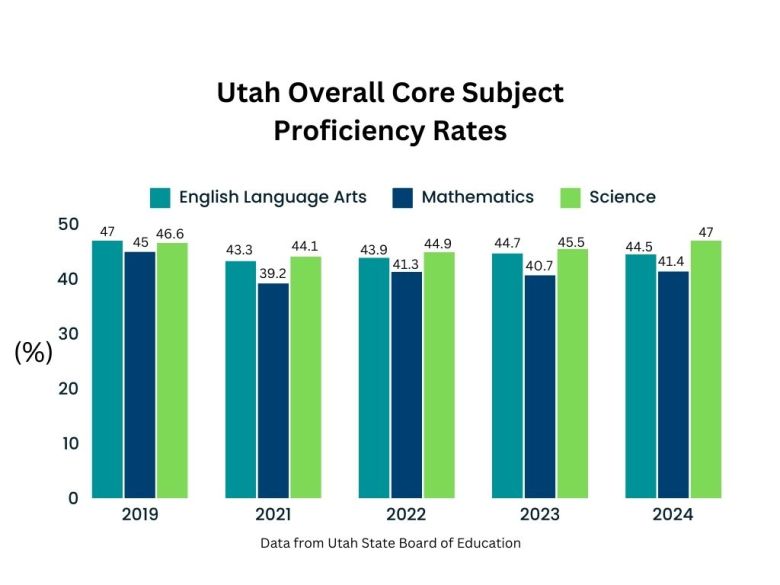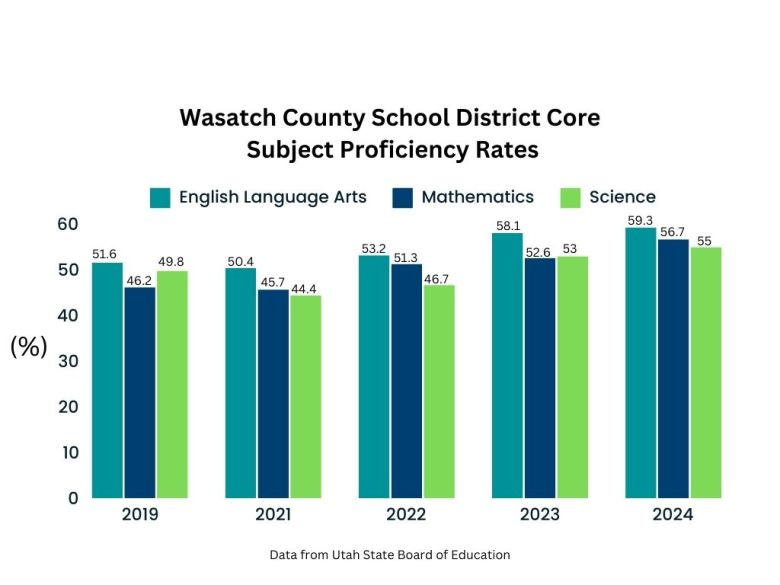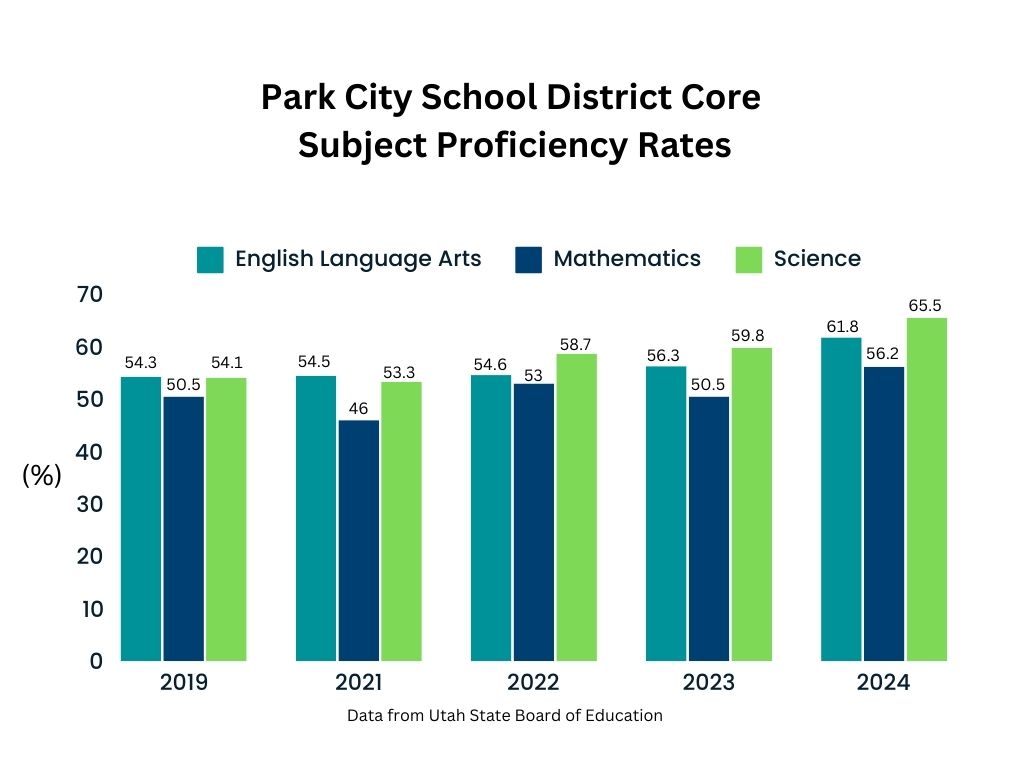While schools across the state and country struggle to get students up to the standards they were meeting before the COVID-19 pandemic, Wasatch County School District and Park City School District have managed to not only make up lost ground but also surpass their 2019 standings.


The Utah State Board of Education released its 2024 student proficiency data based on two standardized tests: the Readiness Improvement Success Empowerment given to third-eighth graders and the Utah Aspire Plus administered to students in grades nine and 10.
In 2019 — the school year before the COVID-19 pandemic — students’ test scores throughout the state showed that 47% were proficient in English language arts, 45% in mathematics and 46.6% in science.
In 2021 — the year after the worst of the pandemic and the effects it had on schools and students — had passed, its effects on education were noticeable. The proficiency rates had dropped to 43.3%, 39.2% and 44.1%, respectively.
While Park City School District and Wasatch County School District stayed a cut above average both before and after the pandemic, neither community was immune to the proficiency-dropping effects the vast majority of districts throughout the state and country faced.
In 2019, Park City’s students tested to be 54.3% proficient in English language arts, 50.5% in math and 54.1% in science. In 2021, those numbers changed — most notably math proficiency — to 54.5%, 46% and 53.3%, respectively.
In neighboring Wasatch County, students’ 2019 test scores scored proficiencies of 51.6% in English language arts, 46.2% in math and 49.8% in science. In 2021, those proficiency rates became 50.4%, 45.7% and 44.4%.
Regardless of the pandemic, both of the largest districts in the Wasatch Back also continue to improve their proficiency numbers.
According to the newest reports, Park City’s tests taken in 2024 show 61.8% of students were proficient in English language arts, 56.2% in math and 65.5% in science.
In Wasatch, test results showed students were 59.3% sufficient in English language arts, 56.7% in math and 55% in science.
Despite obvious adjustments that the district had to make due to the pandemic, Wasatch County Superintendent Paul Sweat attributed the district’s success in the situation to using technology efficiently, implementing as few changes as possible and keeping kids in school buildings when possible.
Similarly, Park City officials also worked to maintain in-person learning as much as possible.

